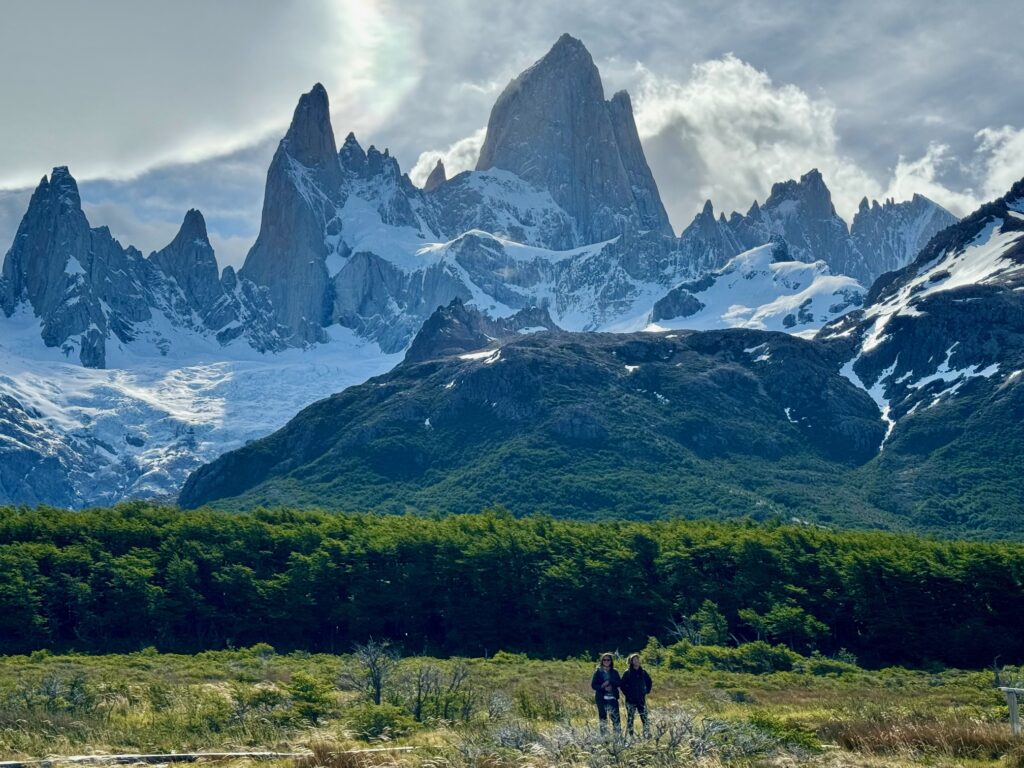Mt. Fitzroy and its adjacent mountain peaks, El Chalten, Argentina
HIghlights
- Getting around Argentina
- Bariloche and San Martin de los Andes for mountain lakes and snow capped mountains.
- Buenos Aires’ La Boca, Blue Dollar and Recoleta Neighborhood .
- Cafayate for the red rock sandstones in Reserva Natural Quebrada de las Conchas and wine tasting.
- El Calafate to see Perito Moreno Glacier.
- El Chalten to hike the base of Mt. Fitzroy.
- Jujuy Province close to the border with Chile and Bolivia to visit the 14 colored mountains (Hornacal), seven colored mountains (Purmamarca), Painter’s Palette in Maimara, Las Señoritas in Uquia and Salinas Grandes.
- Mendoza to chill and more wine tasting.
- The City of Salta for live dinner shows.
- Ushuaia – the town that lay claim as the “End of the World”.
Time of Visit: December 2023 to February 2024 (Split between Argentina, Antarctica and Chile)
Argentina is a huge and long country. WIth its size, comes various landscapes and climates. Best of all, most of the country seems to be under the tourist radar. Except for El Calafate and El Chalten, we did not feel we were surrounded by other tourists unlike popular destinations in Europe.
We briefly highlight what we did at each destination. Links are provided if you wish to find out more about those places. Hope you will find this post informative and useful so let’s get to it.
Getting to and Around Argentina
Visitors fly into Ministro Pistarini International Airport, also known as Ezeiza International Airport (EZE). Some domestic flights such as those going to Ushuaia fly in and out of EZE. EZE is located at the city outskirts and it is about a 30 to 45 minute Uber ride to the city center. The ride to downtown Buenos Aires costs around 15K ARS. Some taxi drivers offered us 20 USD for the same ride. There is not much to do around EZE.
Aeroparque Jorge Newberry or AEP is the city’s domestic airport although our flight from Santiago, Chile landed here. It is about a 10 to 15 minute ride from downtown Buenos Aires. We stayed in the Recoleta area and the Uber ride ran around 5K ARS.
The places listed here are far apart such that we needed to fly between destinations as riding a bus overnight did not appeal to us. Major airlines that serve Argentina domestically are Aerolinas, Fly Bondi, Jetsmart, LATAM and SKY.
We found that Aerolinas’ price is more inclusive, meaning that hand carries are included in the price and of the standard size of 55 x 35 x 25 centimeters (21 x 14 x 9 inches). The others are more budget airlines where you have to pay extra to bring a hand carry. SKY has the smallest hand carry size at 45 x 35 x 25 cms. They will charge you before boarding if you bring an oversize hand carry.
You need a SUBE card if you plan on riding city buses such as in Bariloche, Buenos Aires, Mendoza and Salta. We were told that the SUBE card works in all of Argentina. Just tap the card on the bus card reader and the fare will be automatically deducted from the card’s virtual balance. The only issue with the SUBE card is that you cannot buy it from the bus driver. We got ours from a tourist office but it came unloaded (zero funds). We had to load it up at a convenience store.
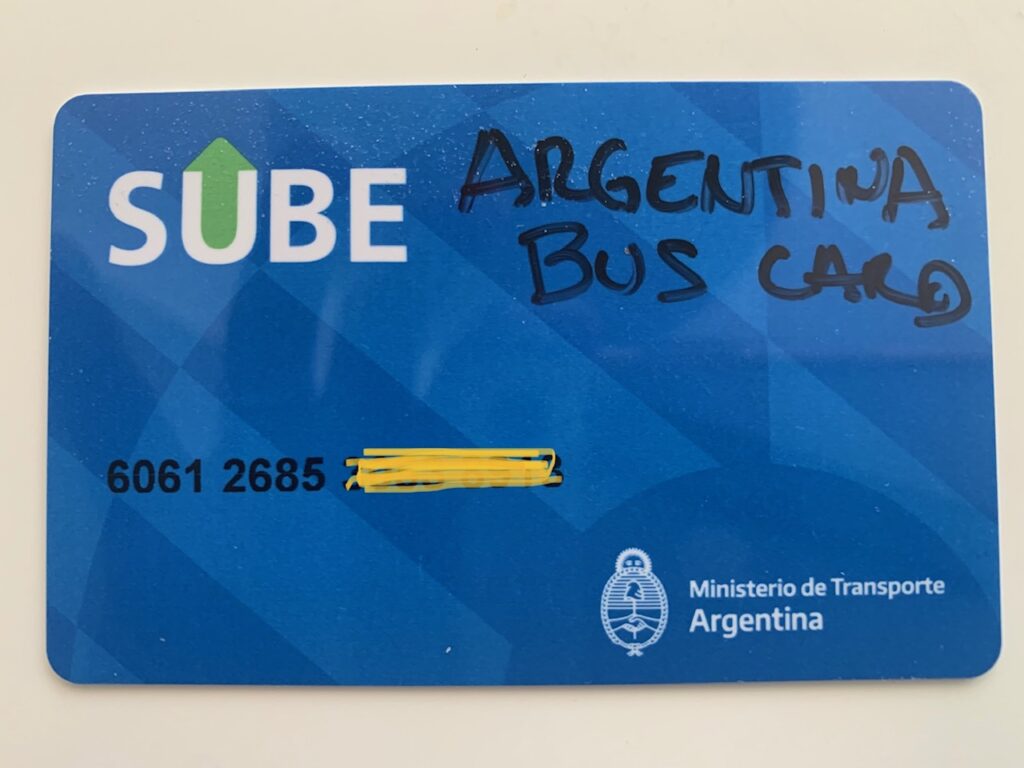



Bus fare costs vary between towns and cities and the destinations. For example, Mendoza fare is 200 ARS a ride while in Bariloche it was 270 ARS a ride except if you are going to Cerro Catedral which costs 800 ARS a ride. You will need to keep track of the card’s balance so that you have sufficient funds for the next ride. Otherwise, you may be asked to deboard the bus as the bus driver does not accept cash payments.
Unless you are in a popular tourist destination like Buenos Aires, El Calafate and El Chalten, do not expect that everybody knows English. It pays to know some Spanish phrases or at least have an offline translator app on your mobile device.
Bariloche – San Martín de Los Andes
Time Spent: Two nights in San Martin and four nights in Bariloche, January
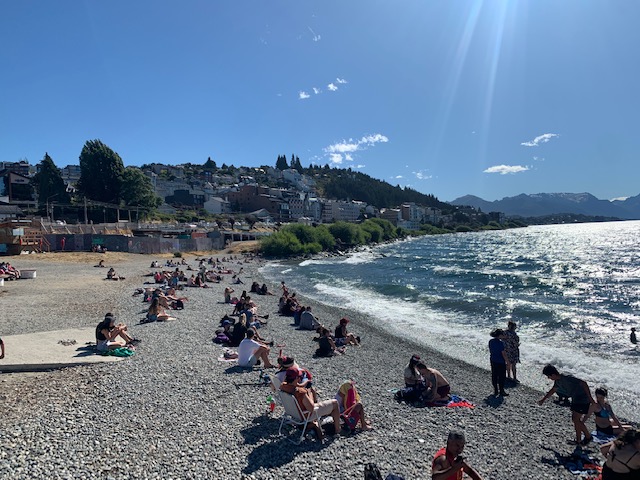

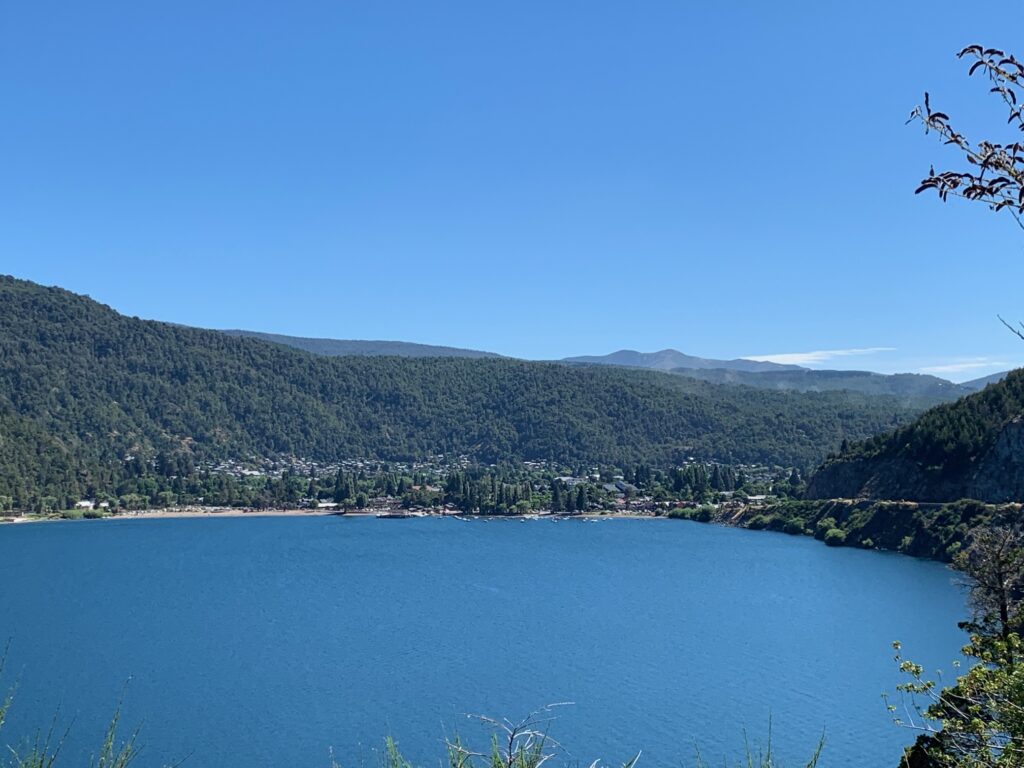

Bariloche and San Martin de los Andes are located near the border with Chile about midway down the length of Argentina (click here for more information). The two towns are separated by about 200 kms of scenic road referred to as the Seven Lakes Drive. We could not help but say “this looks like Colorado” as we drove between Bariloche and San Martin de los Andes. Both towns are by a large lake.
There are plenty of outdoor activities near both towns and the quaint community of Villa La Angostura located midway along the drive. Parque Nacional Nahuel Huapi is close by.
San Martin de Los Andes is the place to be if you are a fly fisherman. There are plenty of guides that will take you fishing at a much lower cost than what you get charged in the US. They will show you pictures of big brown and rainbow trout caught in rivers less than an hour away to entice you. Walking up and down Avenida San Martin to window shop can fill up your day too. The evening scenery in and around Plaza San Martin should not be missed as it feels festive with artisans selling their ware and locals and visitors alike hanging around the plaza
Bariloche has many chocolate shops and “cerveceria” (beer houses). Its main street “Mitre Street” is also lined with shops and restaurants. The area is buzzing with people during the day and night. If you find yourself needing more Argentina peso, we were able to exchange our $ at Andina Cambio Exchange on Mitre Street.
There is no shortage of businesses offering excursions around Bariloche. These range from day trips to the South section of Parque Nacional Nahuel Huapi to whitewater rafting. We just filled our three full days by walking around downtown Bariloche, driving to Cerro Tronador and riding the cable car to Cerro Castillo and down.
The area is blessed with dry weather during the summer. We did not get rained on nor was there any hint of rain during the six days we were there. The temperature was not terribly warm during the day and cooled down during the night such that we did not need air conditioning in our accommodations.
Buenos Aires
Time Spent: Overnight Stays at different times during the trip.
La Boca
The lively and colorful community of La Boca should not be missed if you are in Buenos Aires. It is only a short Uber ride away from the domestic airport Aeroparque Jorge Newberry (AEP). Here you will find colorful buildings, murals, shops and restaurants, some of which have live entertainment such as tango demonstration. We spent the better part of an entire day here and had fun walking from shop to shop and sampling the meat cuisine. This is the place to be if you like meat, particularly beef, at an affordable price. And it gets cheaper a few blocks away from the main tourist area. Just note that the fun stops at around 6 PM when these shops and restaurants start closing.
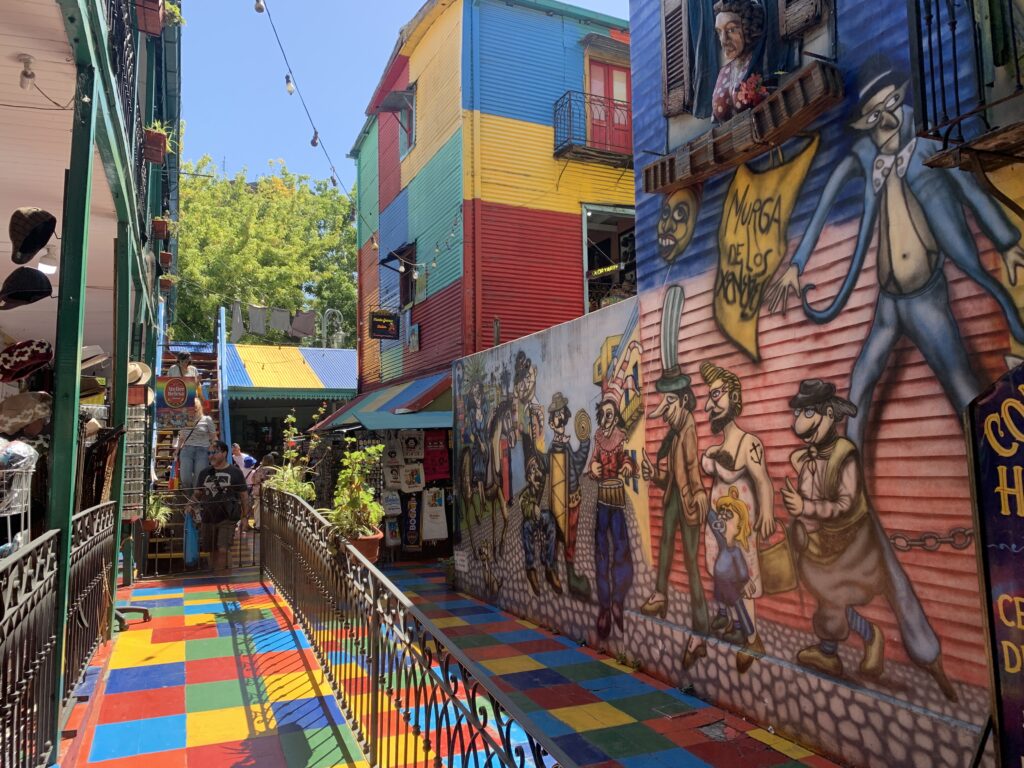

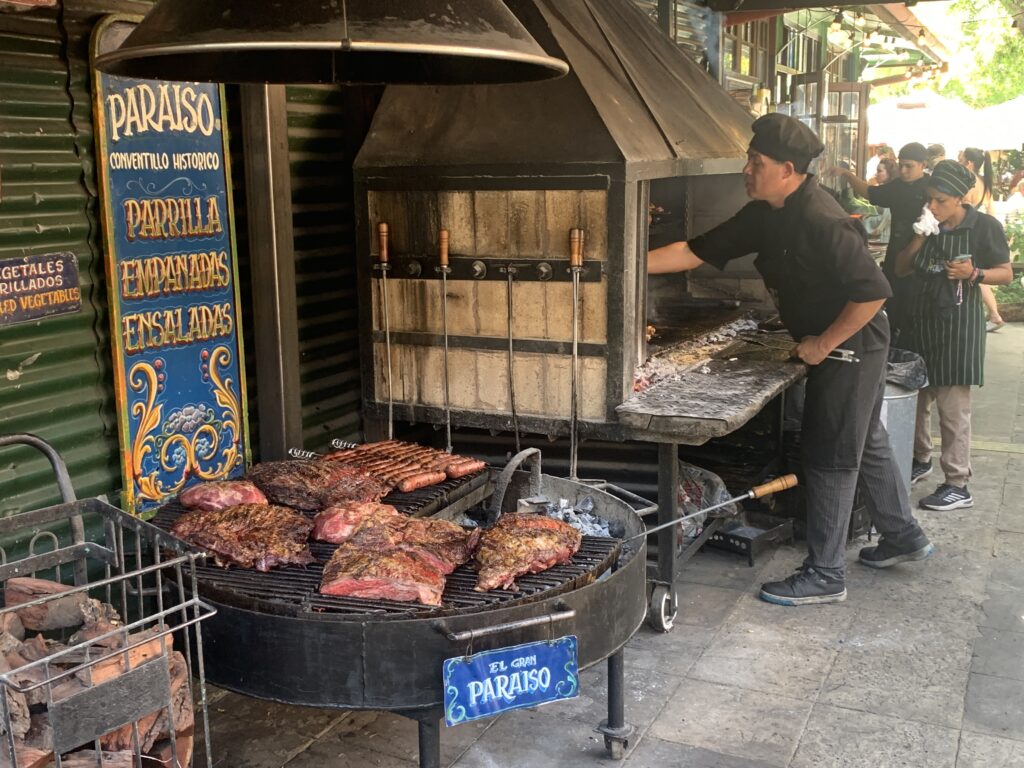

Blue Dollar
The blue dollar rate is the black market exchange rate rate for the US dollar which was more than 30 percent higher than the Google exchange rate (example: we were able to exchange 1 USD for 1,100 ARS when the Google exchange rate was around 823 ARS). However, the smallest denomination that these black market exchange places accept is $50 USD bills. We exchanged our cash at the Dinero Shop at the basement level of the Galeria Pacifico Mall on Florida Street.
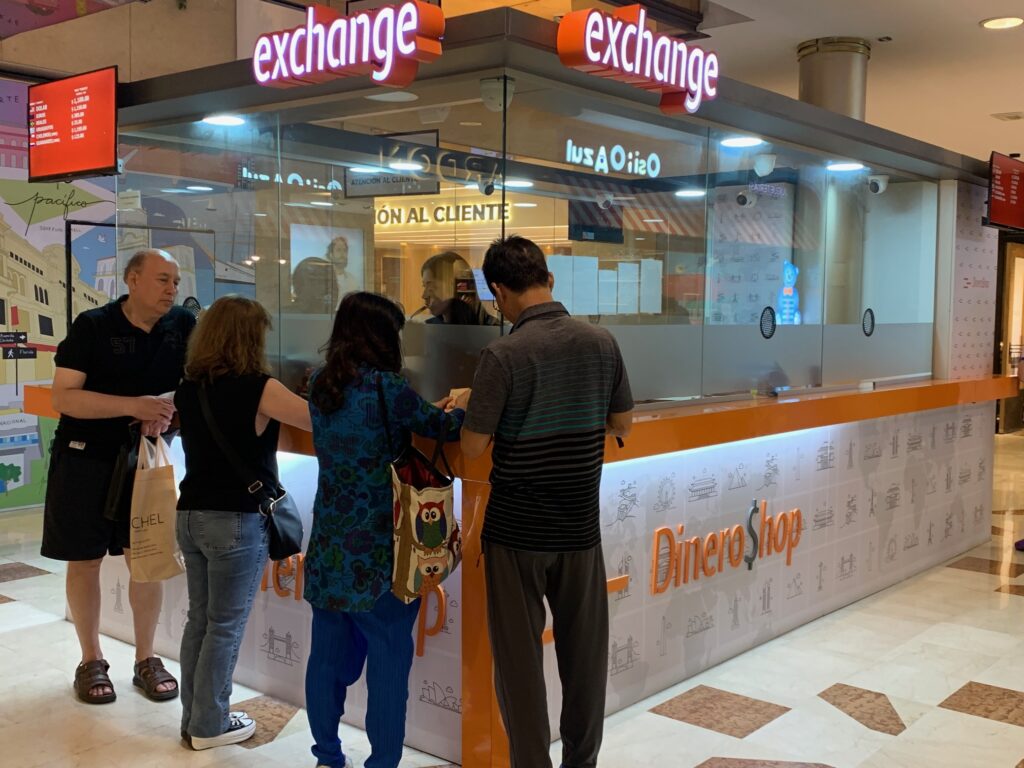

There were plenty of people shouting “cambio, cambio…” along Florida Street but our hotel recommended going to the Dinero Shop to avoid any shady dealings. We did use one of those people on Florida Street that offered to change our USD to ARS. Our experience was that they offered a little more than the Dinero Shop but was a little nerve racking as they took us to a room in one of the buildings to make the transaction.
Recoleta
Recoleta is a nice urban neighborhood not far from the domestic airport, AEP. The area is a mix of multi-story residential buildings, restaurants and shops. There are plenty of places to eat at reasonable prices. There are even some grocery stores around (Carrefour is one of the chain of stores). You would not be disappointed with Recoleta if you prefer to stay in apartments rather than chain hotels.
Cafayate
Time Spent: Three Nights (wished we spent more time here), January
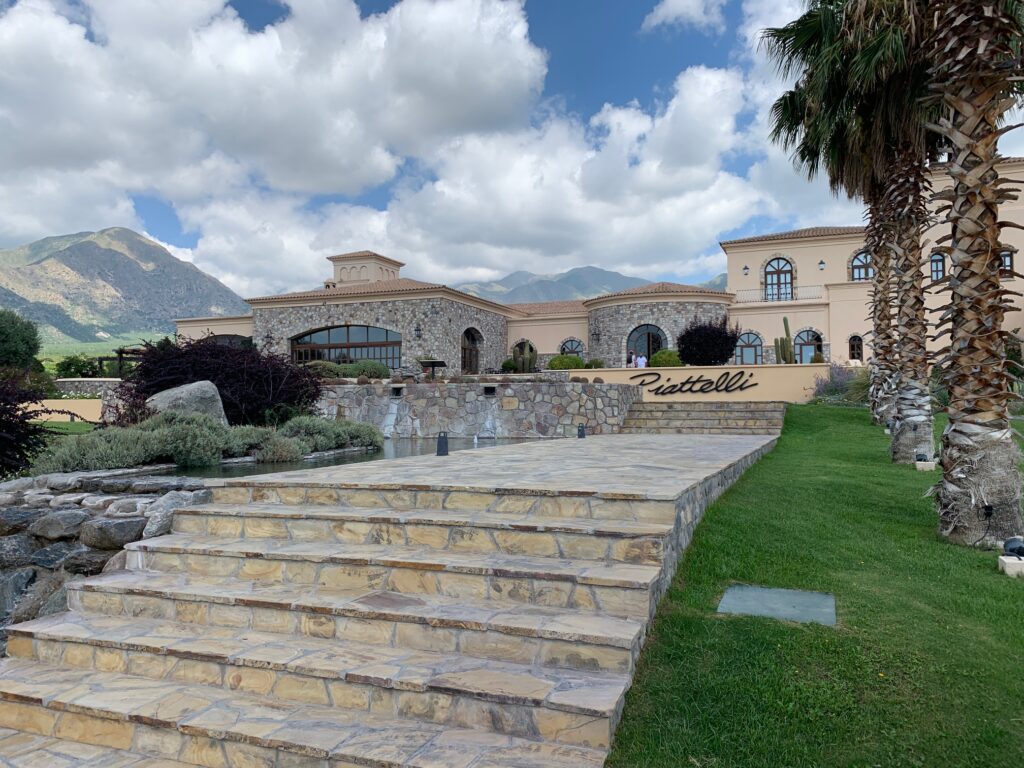

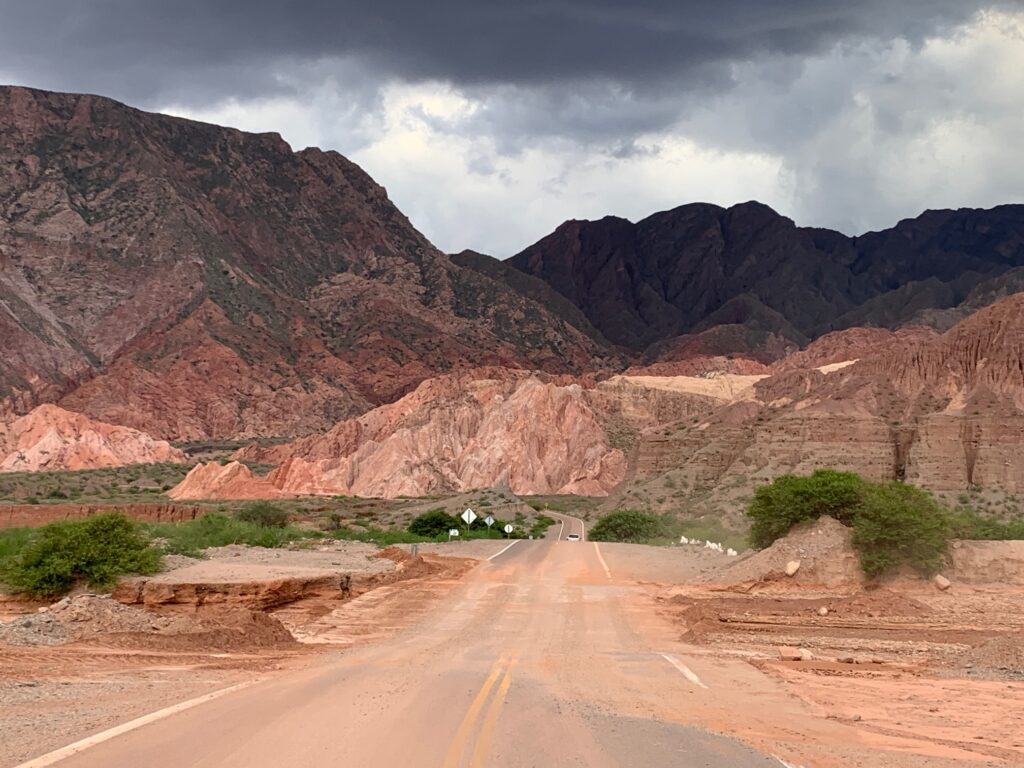

Cafayate is a small town in Salta Province about three hours drive south of the City of Salta. About 30 minutes north of town on Ruta 68 is Reserva Natural Quebrada de las Conchas which is an area filled with multi-colored eroded sandstones. The reserve is a cross between Capitol Reef National Park in Utah and Valley of FIre State Park in Nevada. It is a large area to explore. The pictures of Cafayate posted on Google Maps are mainly about this reserve and not the town of Cafayate. One day of exploration will only scratch the surface of the reserve.
The town of Cafayate is quite small and very walkable. There are shops and restaurants lining its main street which is Ruta 40. Unbeknown to us before setting foot in Cafayate are the 80 vineyards and wineries around town, Some are within walking distance from town while most require you to have some mode of transportation (we saw some people riding bicycles and taking taxis). The scenery here is much better than Mendoza. Cafayate is hard to beat if you like sampling wines at wineries.
Cafayate’s summer temperature is warm and on the humid side. Best to do any outdoor activities early in the morning or late in the day when the sun is down the horizon.
El Calafate
Time Spent: Three Nights (two nights are all that is needed unless you go on excursions), December
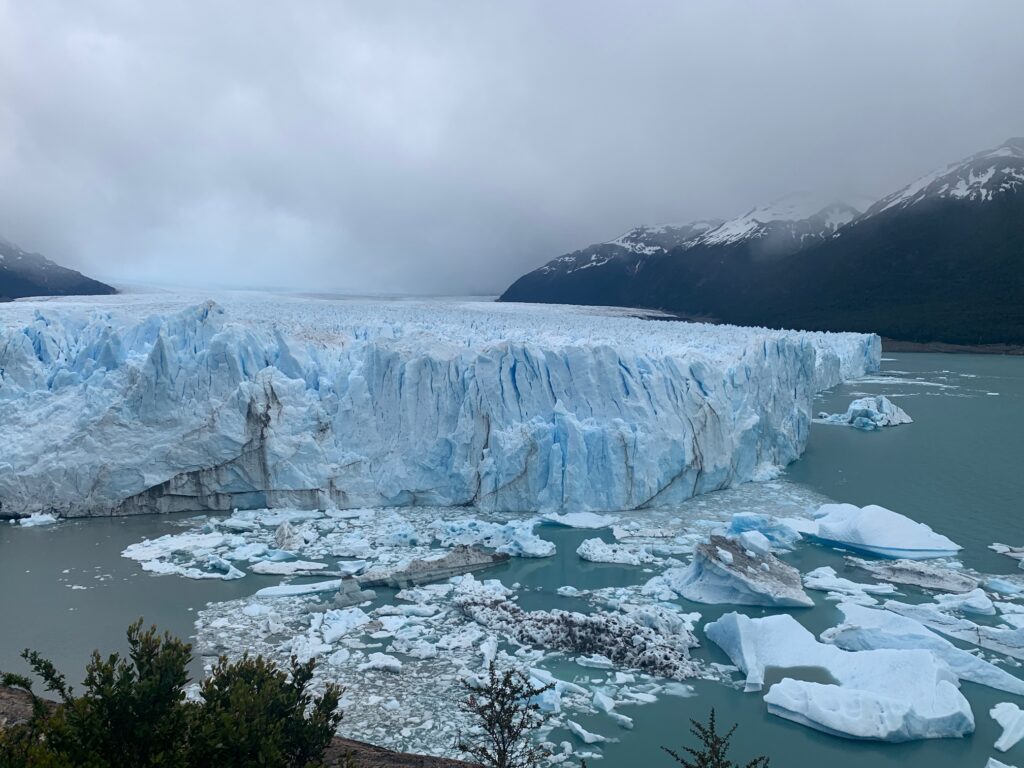

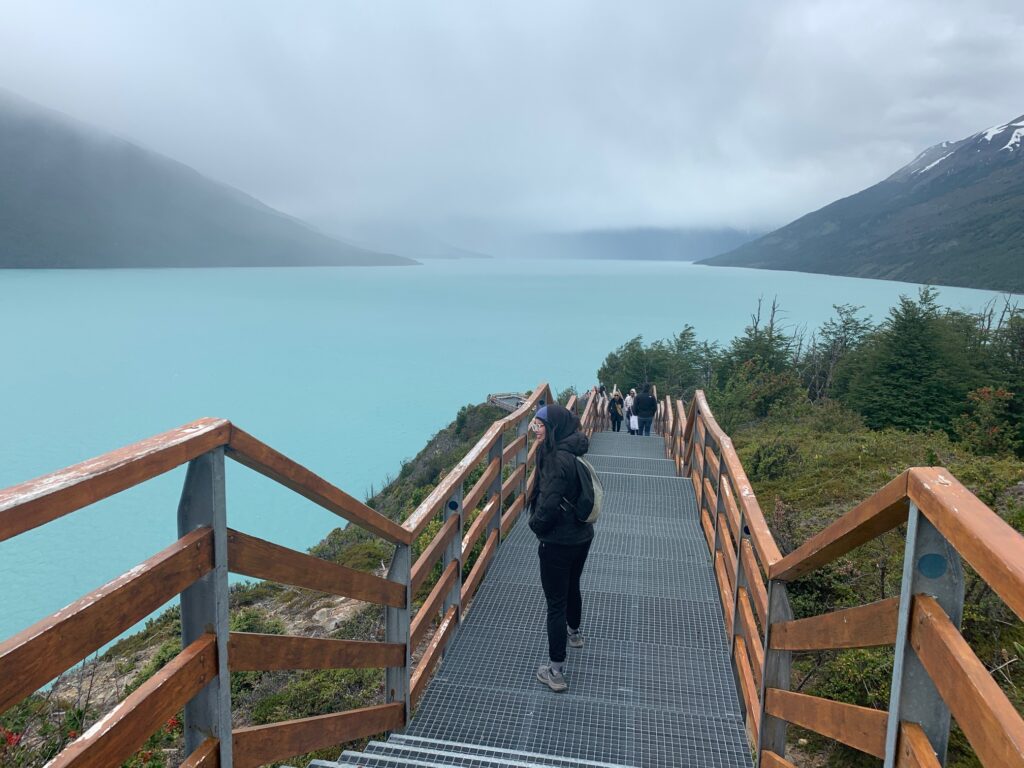

El Calafate is the gateway town to the Perito Moreno Glacier which is a glacier that is easily accessible by driving and a short walk (click here for more information).
There are plenty of companies that offer other glacier related excursions in El Calafate.
El Calafate’s summer temperature ranges from comfortable during the day when it is sunny to chilly when it is windy and cloudy.
El Chalten
Time Spent: Two Nights (wished we stayed longer but accommodations are expensive), December
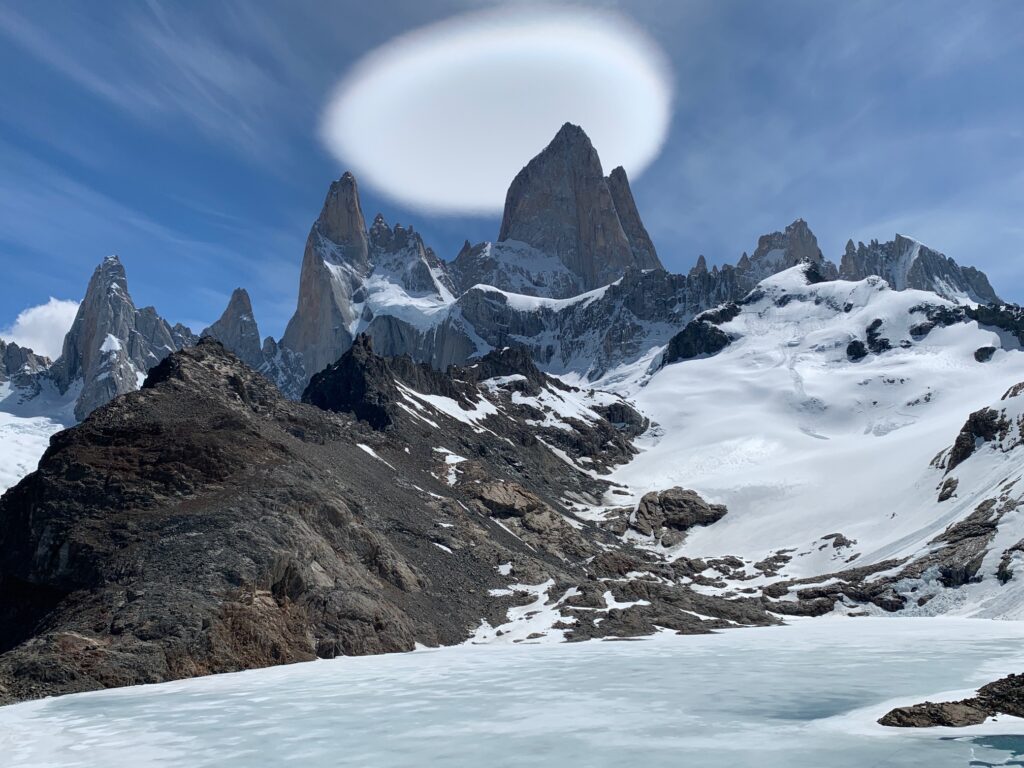

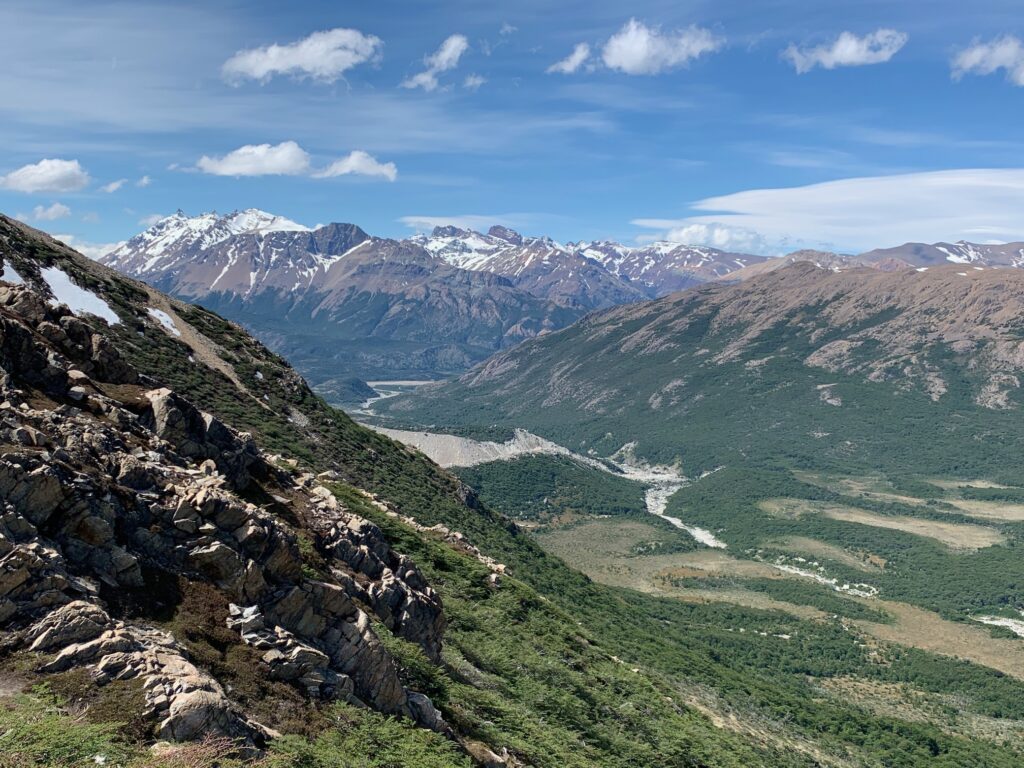

El Chalten is about a three hour drive or bus ride north from El Calafate. The claim to fame of El Chalten is that it is the trekking capital of Argentina. So if you are a hiker, this is where you want to be.
People come to El Chalten to do the Laguna de los Tres hike which ends at the base of Mt. Fitzroy (click here for more information). Most people say that the Patagonia apparel company logo is patterned from Mt. Fitzroy and its adjacent mountain peaks. There are other hikes or things to do in El Chalten such that three or four nights could easily be filled.
You will need a warm jacket at night in El Chalten during the summer as the temperature drops like a rock after sundown and is made worse with frequent strong winds.
Jujuy Province
Time Spent: Three Nights in Juella and Three Nights in Purmamarca (just right)


Jujuy Province is in the northern part of Argentina at the border with Chile to the west and Bolivia to the north. The northern part of Jujuy Province is high desert so it may be warm but it is not miserable due to the low humidity even in the summer. The places to visit here are Hornocal (must see), Painter’s Palette in the town of Maimara, Las Señoritas, Salinas Grandes, the towns of Tilcara and Pumamarca.
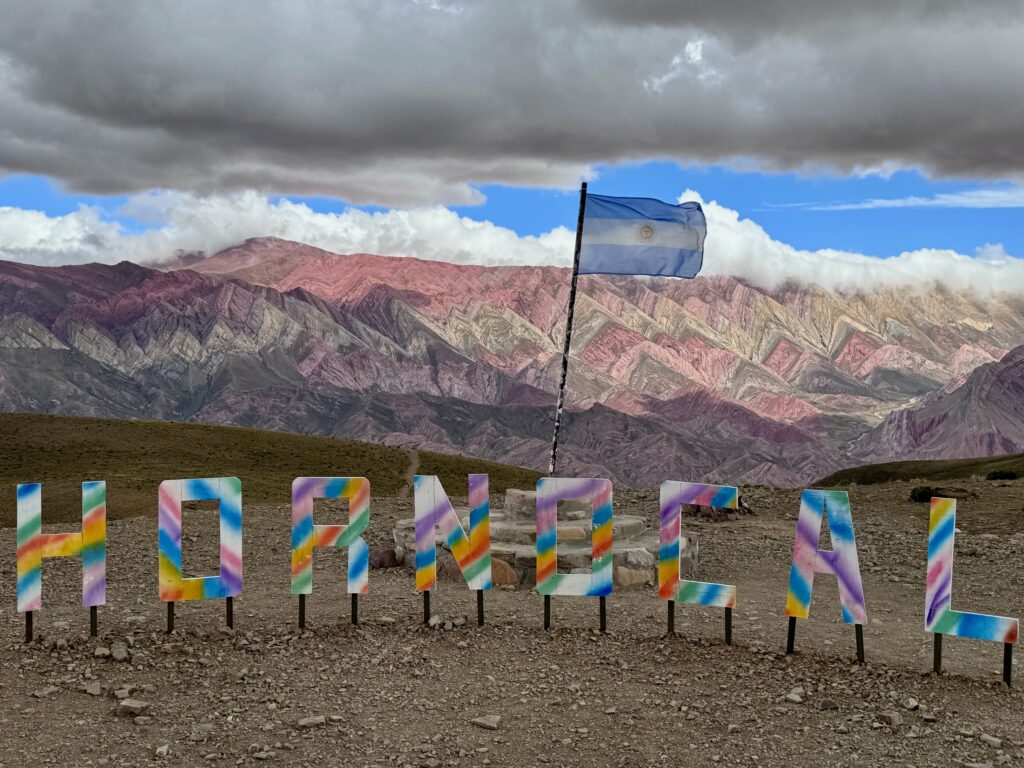

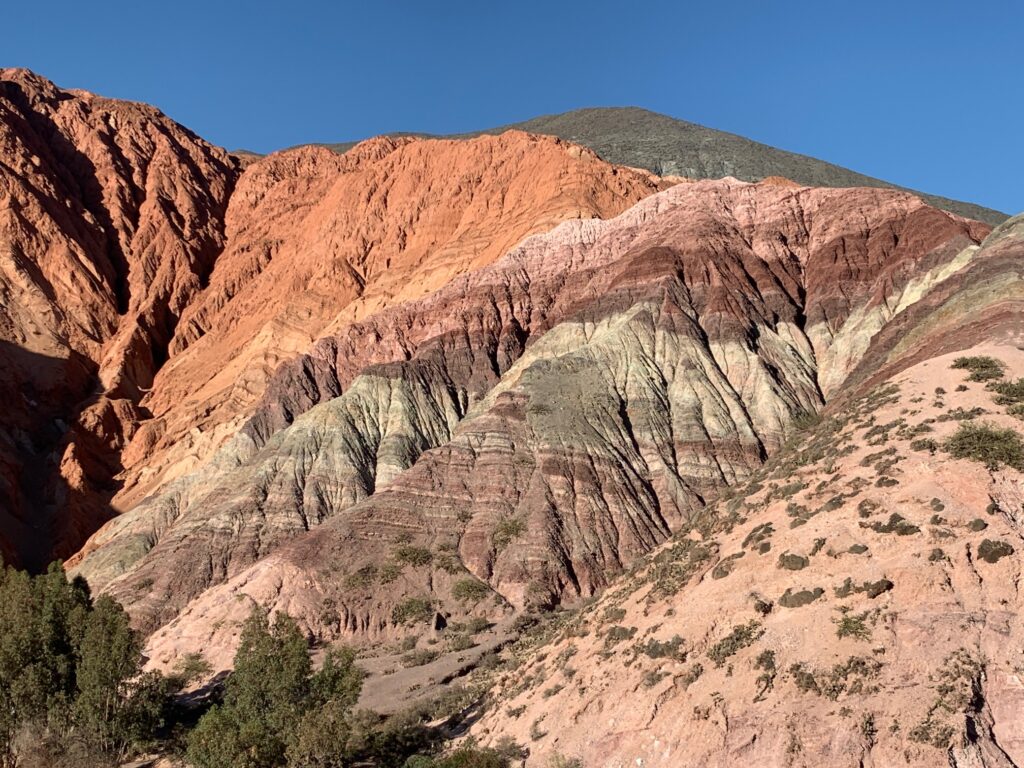

Tilcara is a quaint town to explore. We particularly had fun going to the town’s market to shop for food and knock-off apparels. The town of Humahuaca which is the gateway to Hornocal is another little town that was fun to walk around its Plaza Sargento Mariano Gómez which is filled with vendors selling colorful souvenirs.
Mendoza
Time Spent: Five nights (two nights would have been sufficient for us), February
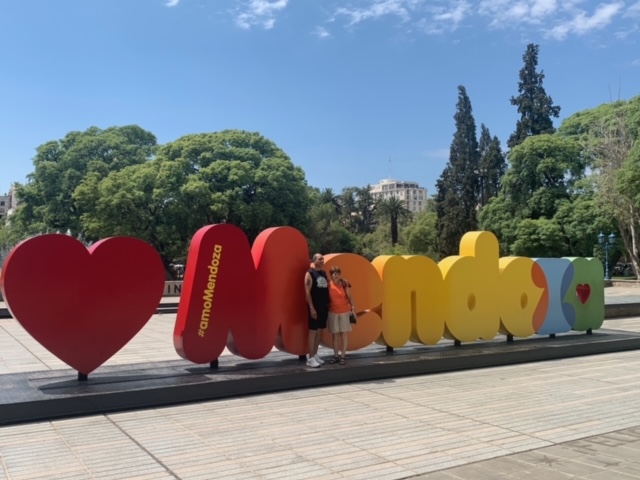

The city of Mendoza is famous for wine, particularly Malbec. However, Mendoza is a large city and the vineyards are in its outskirts. You either have to drive or hire a ride if you want to visit a winery with a vineyard. The travel time can be as long as an hour from the city center. But if you are staying in the city, it is fairly easy to get around using public buses. The bus stops list the buses that stop at that location. You can even catch Bus 680 that goes every two hours between the city and airport. Just go to the right when you get out the airport and you will see the bus stop right after the designated Uber pick-up point.
There are “bodegas” within the city that offer wine tasting but it would not be in a vineyard setting. We went to Lopez winery which was recommended by a domestic tourist from Buenos Aires that we met in Cafayate. The place looked more like a factory than a winery.
However, the city itself has a few things to offer that makes it worth the visit. There was an evening choreographed water fountain and light show at Plaza La Independencia. There is also an artisan market at the Plaza.
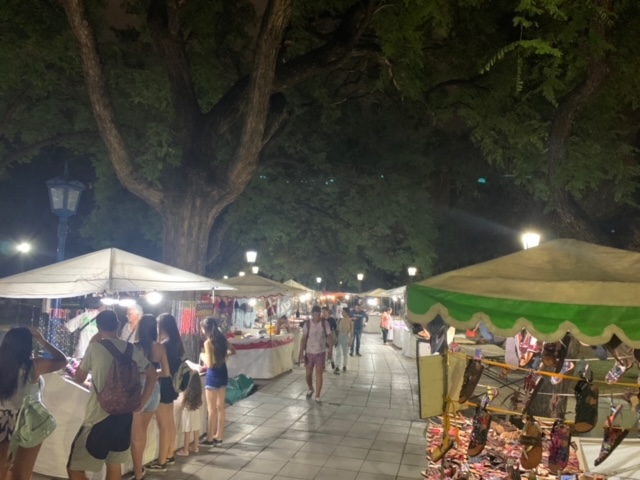

Across Plaza Independencia to the east is Peatonal Sarmiento which is a pedestrian only street that spans three blocks. It is lined with coffee shops and restaurants where people can dine under shade trees. In fact, most of the streets in Mendoza are lined with trees which makes it nice to just take a stroll to see the neighborhood.
Not far from Peatonal Sarmiento are several streets lined with shops and restaurants as well as the city market. Speaking of restaurants, you can also head over to Aristides on Villanueva Street. Your head will spin trying to decide on where to eat as restaurants line both sides of the street for about six blocks.
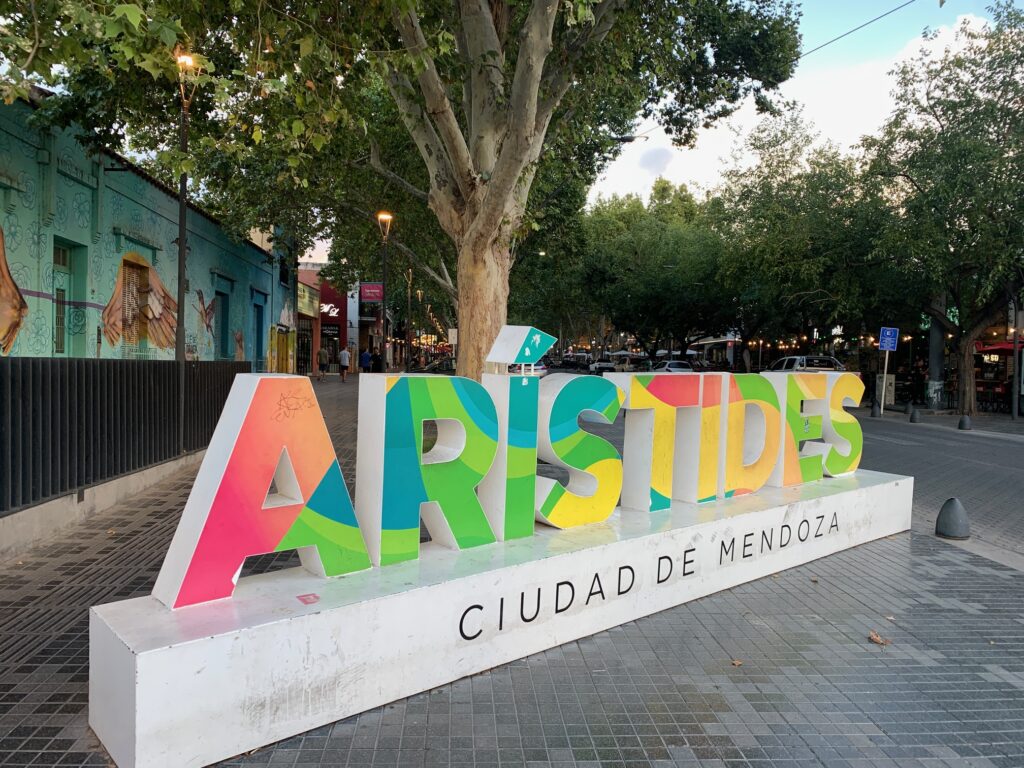

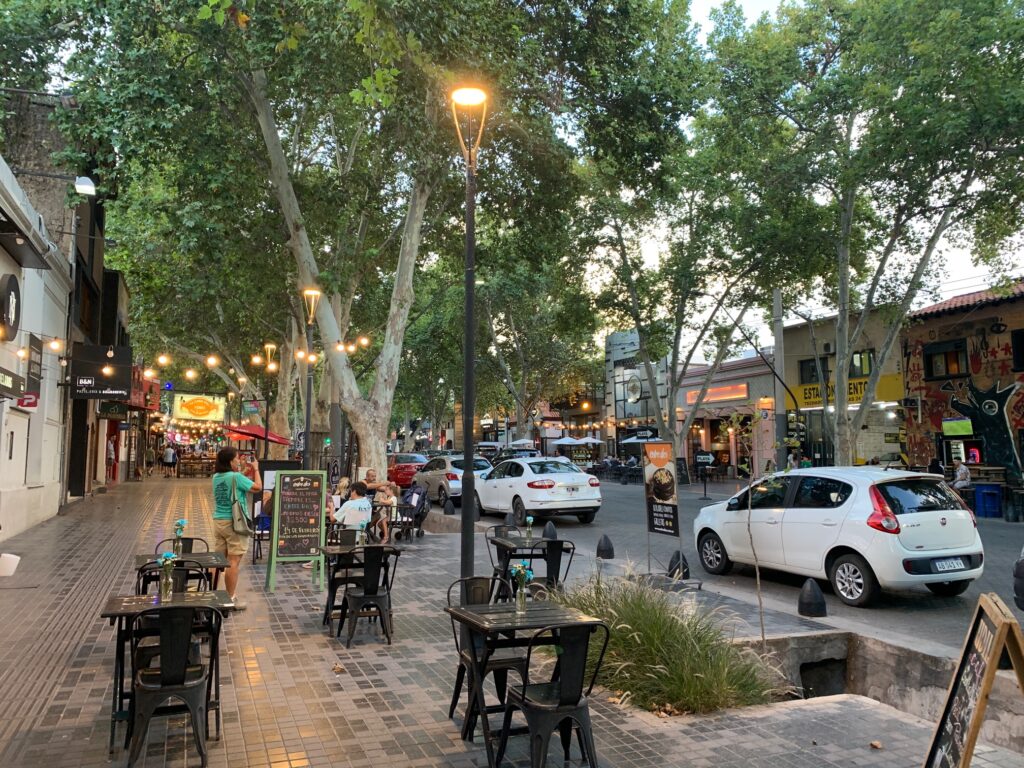

There is also no shortage of companies offering different kinds of excursions around Mendoza. We just did not have any interests in outdoor activities as it was fairly warm and humid in Mendoza in early February.
Puerto Iguazu
Time Spent: Three nights (just right), around New Year’s eve
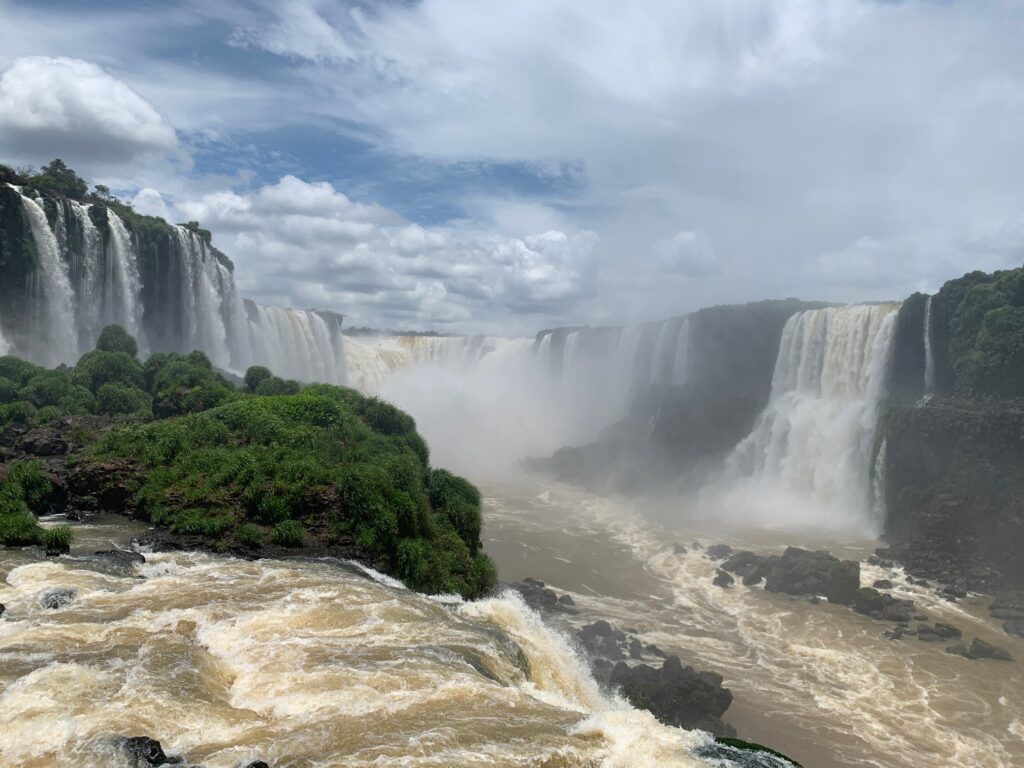

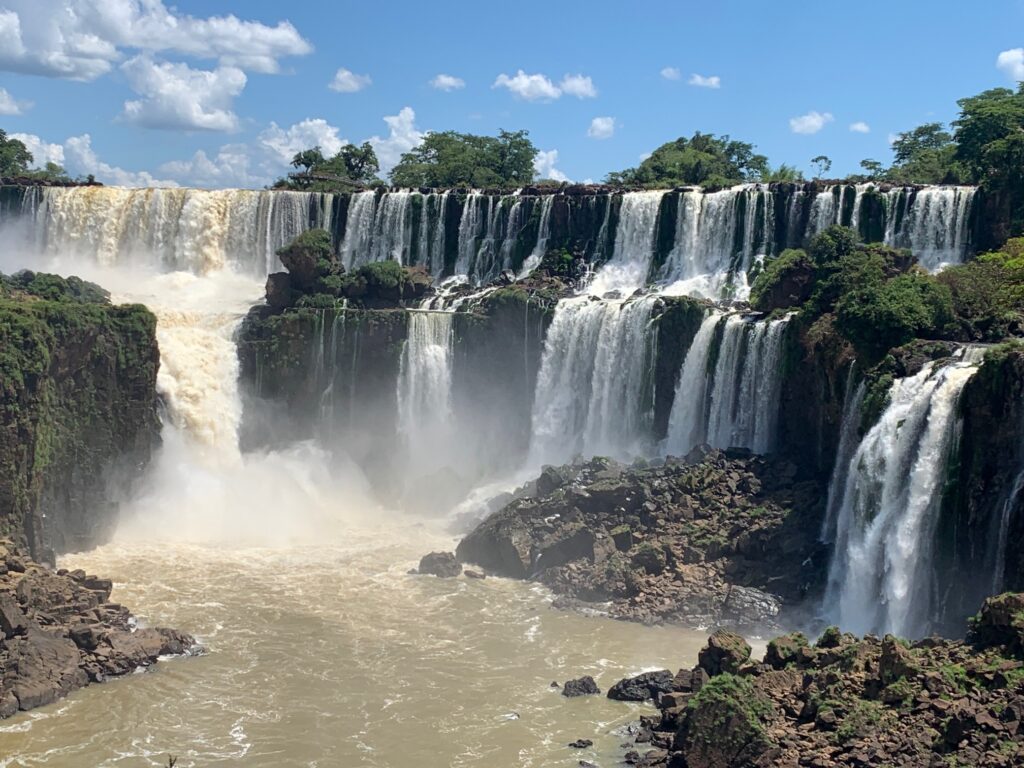

Iguazu Falls is a large waterfall network between Argentina and Brazil (click here for more information). Puerto Iguazu is the town on the Argentine side that served as a base for us to see the waterfalls. Both Argentina and Brazil have national parks that provide access to seeing the waterfalls.
The Brazilian side has a more panoramic view than the Argentinian side. However, we were able to see a lot of coatis and monkeys on the Argentinian side.
Salta
Time Spent: One night (wished we stay a few more nights to see more evening shows), January
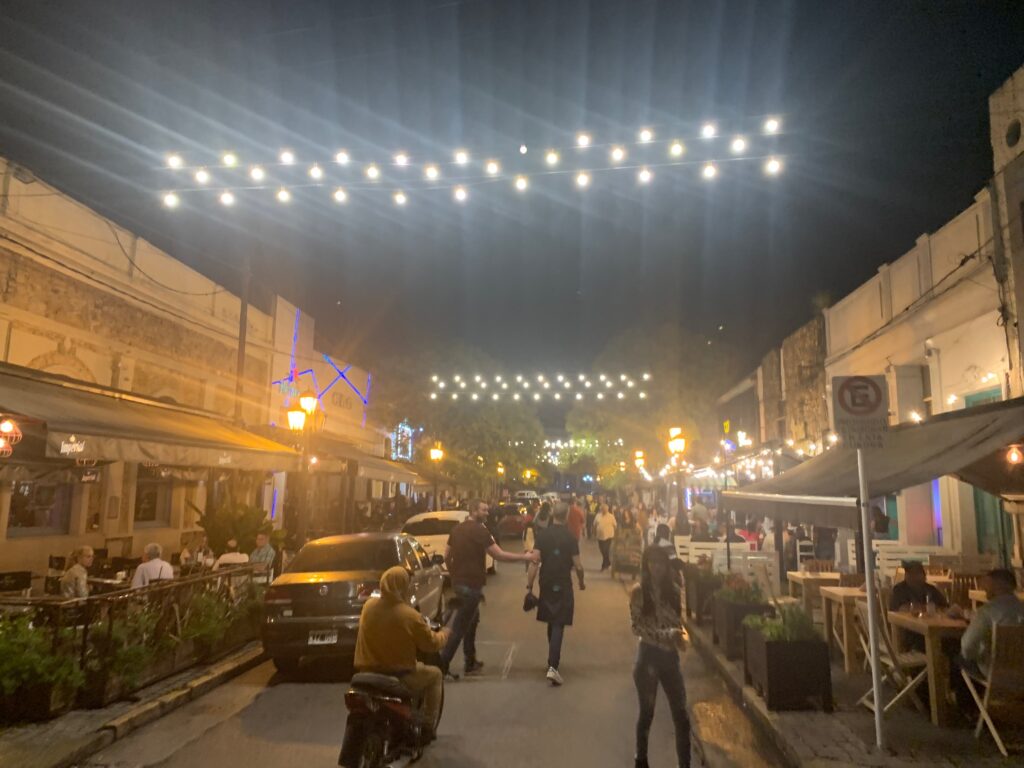

We did not find much to do in Salta during our research so we only stayed overnight to catch our flight to Buenos Aires the following day. We regretted this decision as we found out that the section of Balcarce Street, between Ameghino and Avenida Entre Rios, is lined with restaurants that not only offer good food but also shows.
Where else could you find a place where two dinner steak entrees costs less than $40 USD and is accompanied by two and half hours of live entertainment (though in Spanish)? Answer – La Estación Vieja. Just make sure you come early or make a reservation as it was packed when we went.
Summer is the rainy season in Salta. It was raining on and off when we arrived and again when we left ten days later.
Ushuaia
Time spent: Half a day (the trip to Ushuaia was pre-arranged by the Antarctic cruise company)
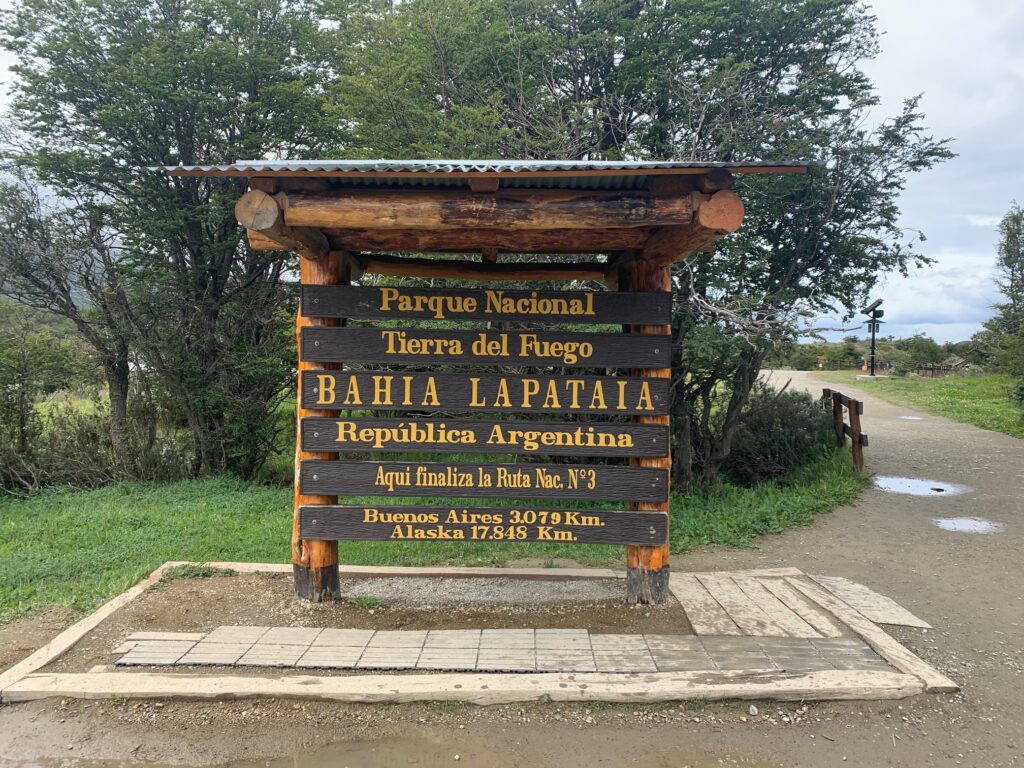

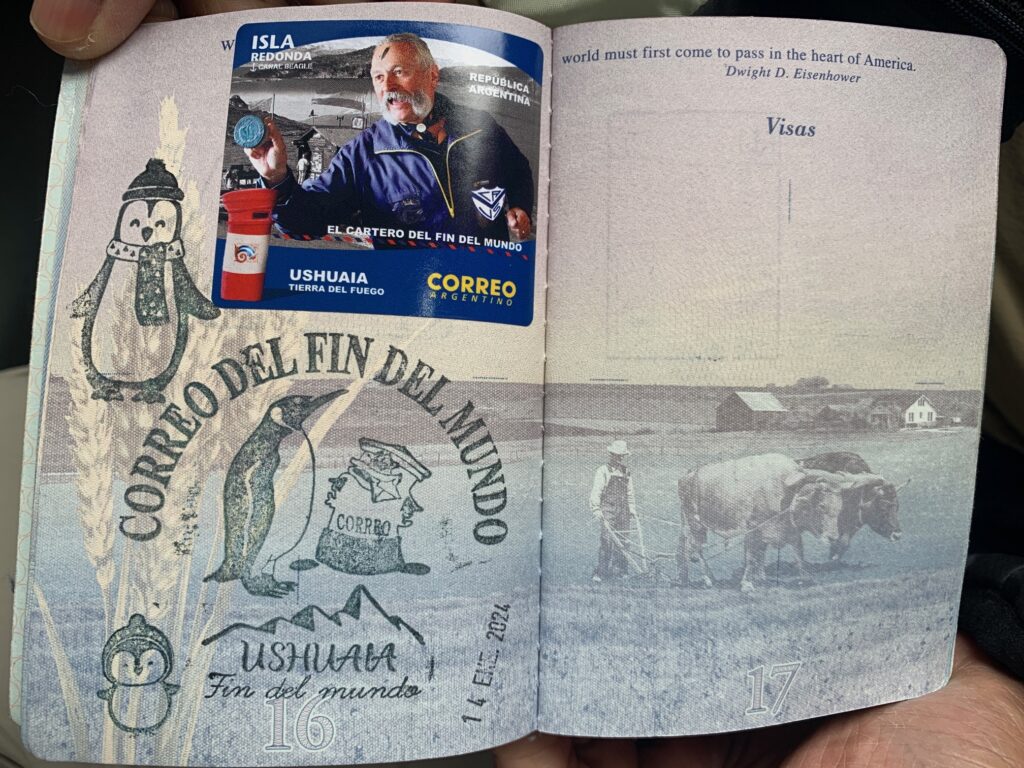

Ushuaia is the southernmost city in the world. Its nickname is “Fin del Mundo” or end of the world. Here you will find the southernmost post office where they will stamp your passport for $3 USD so you can prove you have been there. You can also buy and mail postcards from there.
The city is bordered by the Beagle Channel on one side and Parque Nacional Tierra del Fuego on the other. There are plenty of outdoor opportunities in Tierra del Fuego such as hiking and camping. The Pan-American highway that starts in Prudhoe Bay ends here as Ruta 3. The park’s highlights (meaning those readily accessible from the road) can be seen in half a day. Park roads are compacted dirt and very driveable with a regular car.
Ushuaia is also a port city for cruise ships that go to Antarctica (click here for more information about cruising to Antarctica).
We were told by our guide that Ushuaia is a winter destination for snow related outdoor activities.
You will need to bring both warm and light clothing if you go to Ushuaia in the summer. It can get cold during the day when it’s windy and cloudy and just right when it is sunny and calm.
Summary
Argentina’s huge size provides varying landscapes and climates. It has lush jungle to the northeast near Brazil, arid and high desert to the northwest near Chile and Bolivia, wineries in the central region, mountains to the west near the border with Chile and epic glaciers to the south.
Except for El Chalten and El Calafate, the rest of destinations mentioned here appear to be spared from mass tourism. El Chalten and El Calafate are also very expensive to visit while the rest of the country is relatively cheap. Ignoring these two tourist hot spots, Argentina is very affordable to travel especially if you take advantage of the blue dollar exchange rate (bring as much $100 bills as you can).
We are pretty sure that there are more places in Argentina worth discovering. But you will not have any regrets in visiting the places mentioned in this article.

